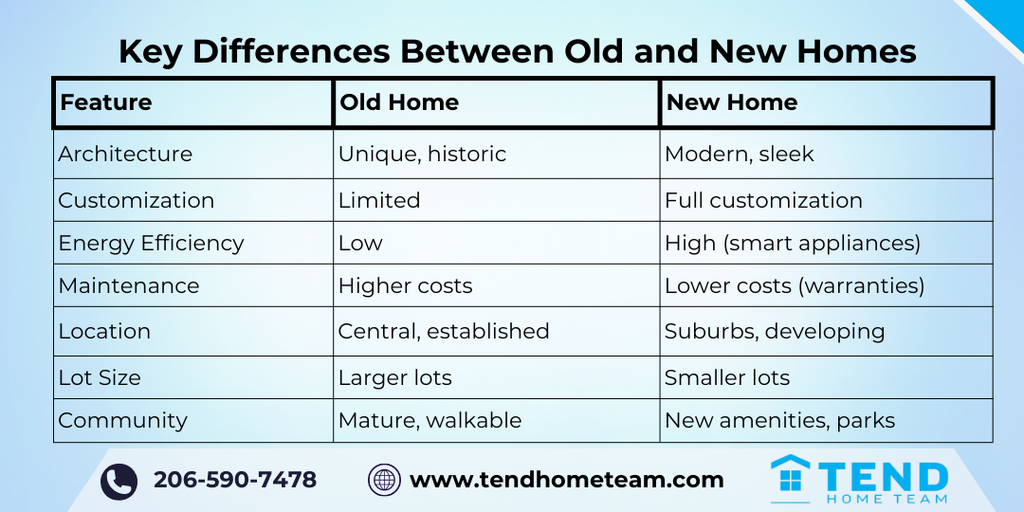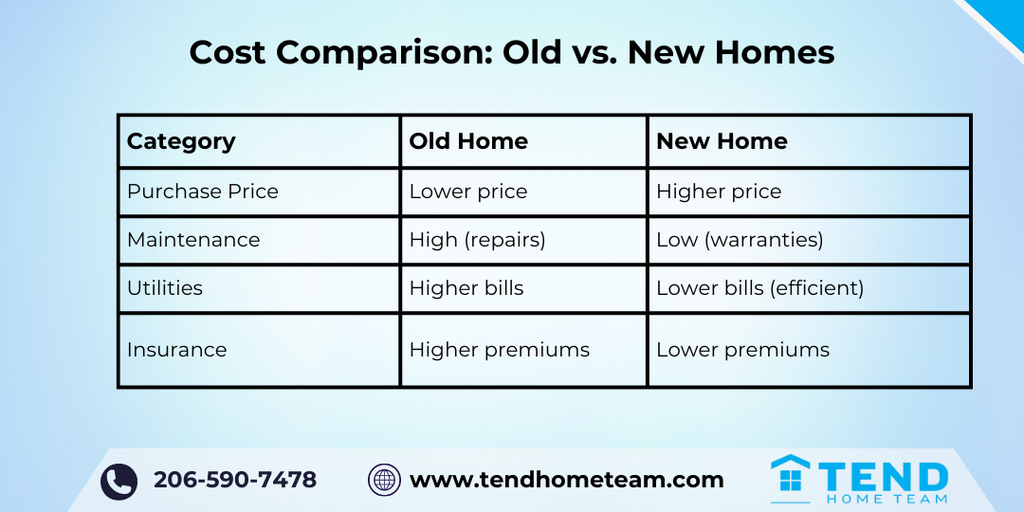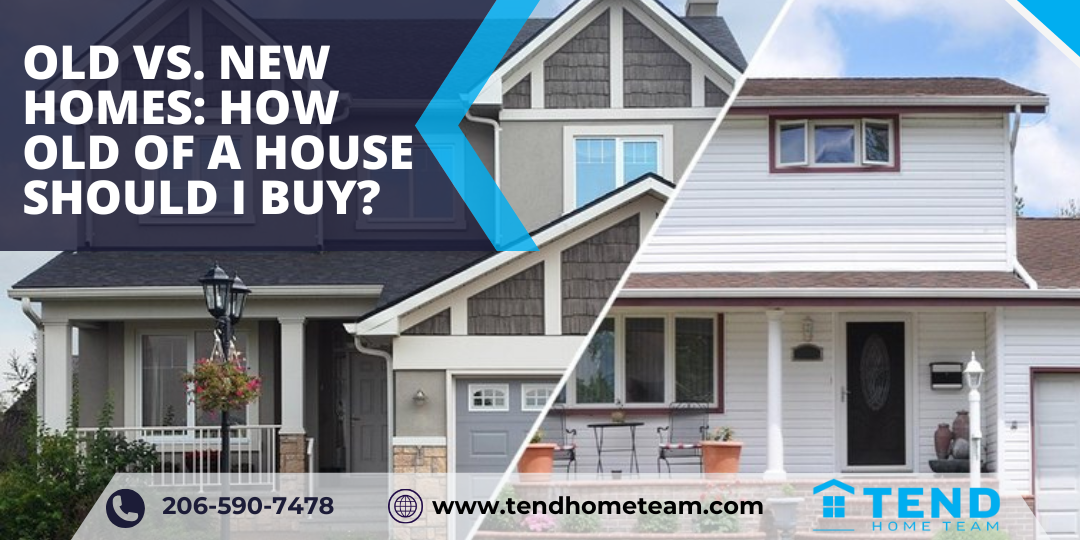When buying a house, one of the most important decisions is whether to buy an old home or a new construction home. Each option comes with unique advantages and potential drawbacks. Old homes offer timeless charm, larger lots, and established neighborhoods, while new homes feature energy efficiency, modern technology, and less maintenance. So, how old of a house should you buy? This guide will help you weigh the pros and cons so you can make a confident decision.
What Defines an Old or New Home?
An “old house” is typically classified as being 25 to 50 years old, while a home that is over 100 years old is often considered a “historic” property. A new house is generally considered to be less than 10 years old or a newly constructed home. For insurance purposes, homes older than 40 years may require higher premiums due to the age of materials and systems.
Key Differences Between Old and New Homes

Pros of Buying an Old House
1. Unique Character & Charm
Old homes feature beautiful craftsmanship, like hand-carved wood, stained glass, and vintage fixtures. These features are rarely seen in modern cookie-cutter developments.
2. Larger Lots & Outdoor Space
Older homes are often built on larger lots, giving you more space for outdoor activities, gardening, and privacy.
3. Established Neighborhoods
Old homes are typically in well-established communities with mature trees, parks, and walkable infrastructure.
4. Renovation Potential & Value Growth
Renovating an older home allows you to increase its value and build equity.
5. Proven Durability
Older homes often have more durable materials, like old-growth wood, which can be stronger than modern materials.
Cons of Buying an Old House
1. Higher Maintenance Costs
Old homes require frequent repairs and replacements for roofs, plumbing, and HVAC systems.
2. Outdated Features
Older homes may lack central air, modern electrical outlets, and smart technology.
3. Hidden Issues
From termites to structural issues, old homes can surprise you with costly repairs.
Pros of Buying a New House
1. Customization & Modern Design
Buyers can often customize finishes, layouts, and fixtures to suit their lifestyle.
2. Energy Efficiency & Smart Technology
Modern insulation, smart thermostats, and energy-efficient appliances lower utility bills.
3. Low Maintenance Costs
New homes have brand-new HVAC, plumbing, and electrical systems with warranty protection.
4. Community Amenities
New communities often have shared amenities, like pools, playgrounds, and parks.
Cons of Buying a New House
1. Higher Purchase Price
Customization, energy-efficient features, and smart tech raise the overall cost of new homes.
2. Smaller Lots & Less Privacy
Developers prioritize density, meaning smaller lot sizes with less privacy.
3. Cookie-Cutter Design
Many new builds follow a repetitive design, reducing uniqueness.
Cost Comparison: Old vs. New Homes

How to Choose the Right Home for You
- Budget: Can you afford maintenance costs for an old home?
- Lifestyle: Do you prefer modern layouts or historic charm?
- Privacy: Do you want a larger lot with more privacy?
Frequently Asked Questions (FAQs)
1. What is considered an “old house”?
A home is generally “old” if it’s over 25 to 50 years old, and “historic” if it’s over 100 years old.
2. Are older homes better built?
Older homes were built with higher-quality materials, but newer homes follow stricter building codes.


